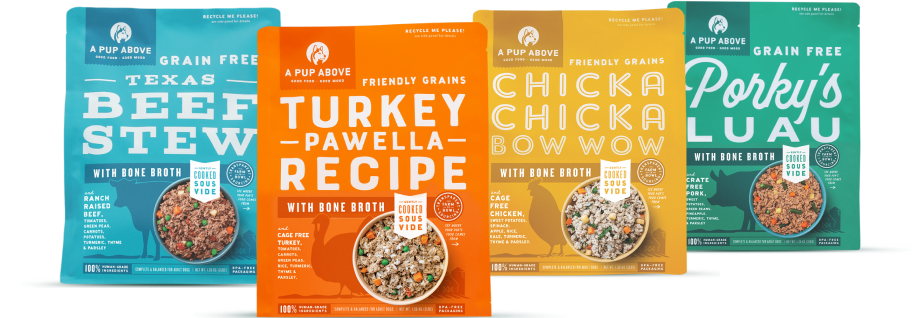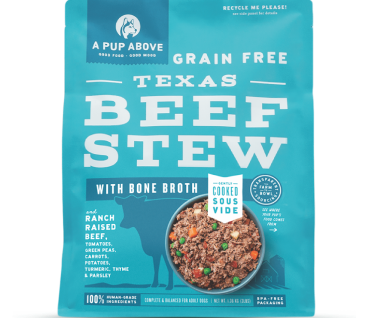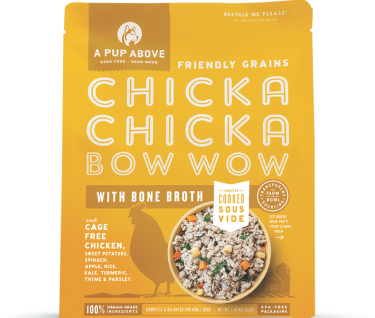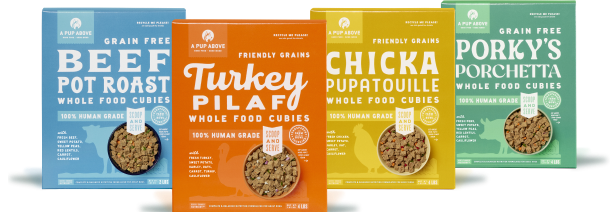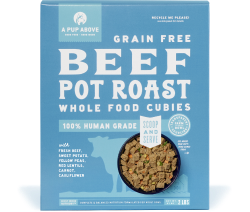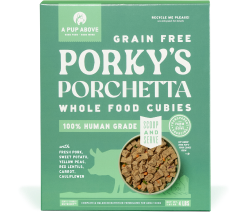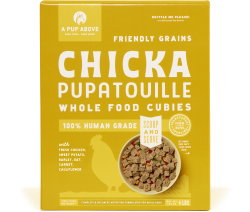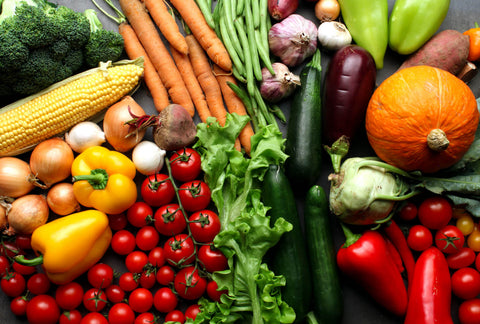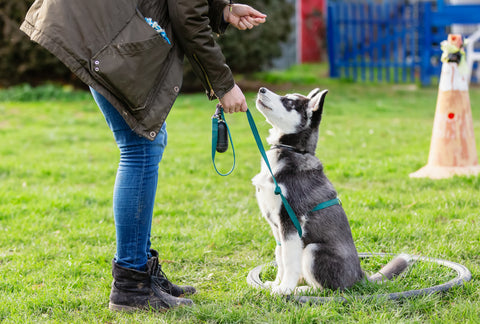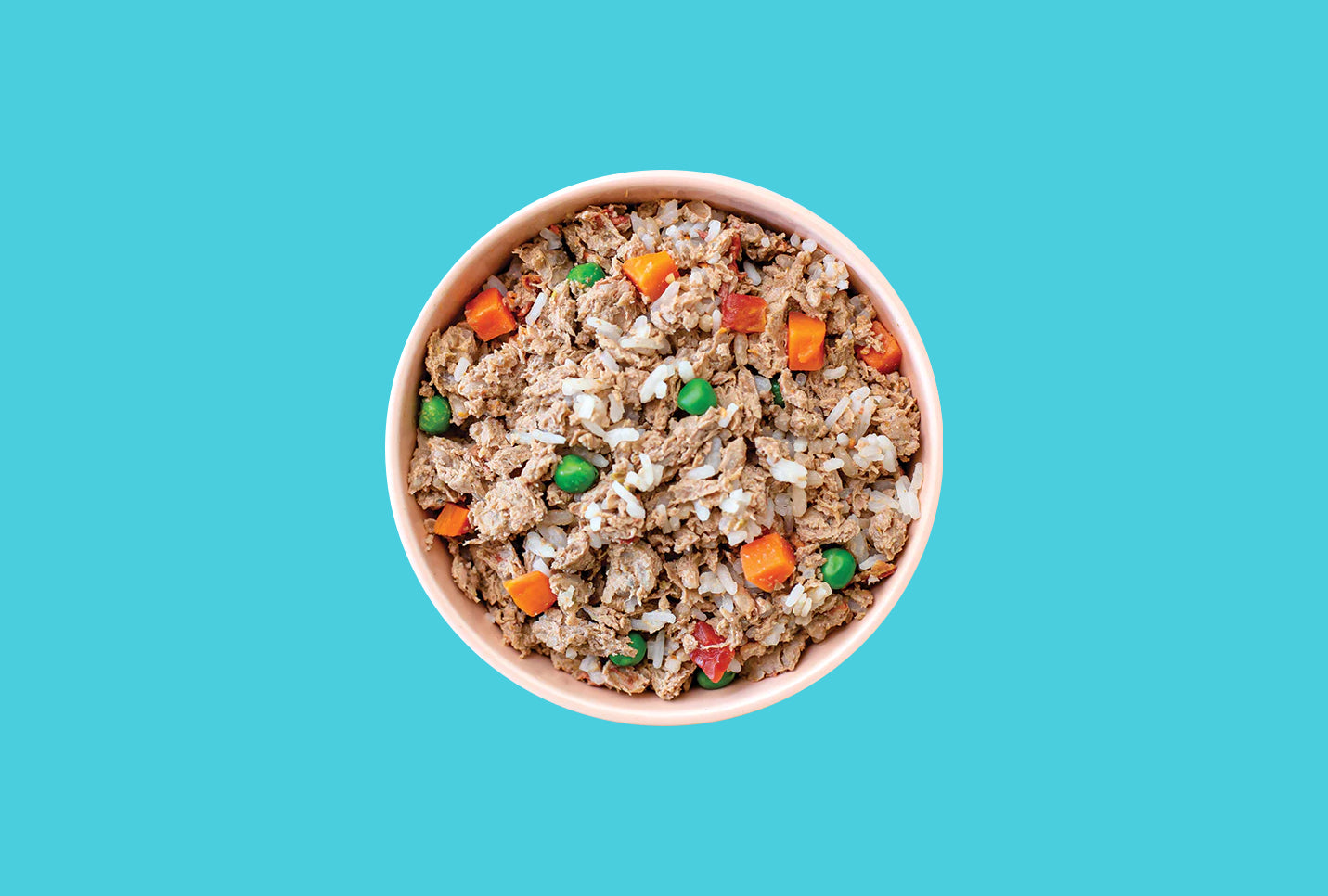
Across the array of different dog foods, you might see some labeled as “human grade,” which may be a term you haven't heard of before. Prior to running out and grabbing a random bag of dog food, it's best to learn a bit more to make the best decision for your furry family member.
The term “human grade” can be confusing to many pet owners. Does it mean that it is safer or healthier for pets, or is it just a marketing ploy? What is human-grade pet food, and how does it differ from feed grade?
This article will look at human-grade and feed-grade labels, what they mean, and how to transition to high-quality human grade pet food for your pets.
What Does Human Grade Mean?
For a food to make the claim that it’s human grade on its packaging, it must meet all of the safety standards set by the FDA and U.S. Department of Agriculture — and there are over 100 of these standards.
This doesn’t just mean that all of the ingredients are safe for human consumption. It also means that the food was produced start to finish using safety and quality standards fit for human consumption. This includes the farm where the ingredients were grown to the facility in which it was made, and how it was transported, to the point of purchase from the pet store. The food is fully edible for humans from start to finish.
For many years, there were very few regulations around the terms applied to pet foods, but that has been changing. The Association of American Feed Control Officials (AAFCO) makes food labeling for pet food more regulated and clearer for consumers. AAFCO says that in order for a food to be labeled “human grade” all of the ingredients must be human edible and the food must be made, packaged, and held in accordance with 21 CFR 110, Current Good Manufacturing Practice in Manufacturing, Packing, or Holding Human Food.
This definition is difficult to meet. The cost is high for handling food this way, and companies must submit rigorous documentation to prove that their product meets these high standards.
The process takes time, money, and resources, and many pet food brands don’t strive for “human grade” standards. However, some reputable companies are dedicated to providing high-quality human grade pet food.
When a facility works under constant USDA inspection, it is similar to how meat is produced safely for people to eat. Which we all know is a high standard, as we do not want people to have access to improperly handled meat.
For many of us, this is equally important for our pets and ourselves. In addition to a USDA-inspected facility, testing every batch of food to ensure there are no pathogens helps ensure that our food from A Pup Above meets the human-grade requirement. Once it reaches your pup for dinner, we can be sure it is safe for them to gobble up.
Most pet foods manufactured by companies meet feed-grade requirements as opposed to human-grade ones. This is the main difference between a typical pet food company and a pet food company that produces food legally allowed to be labeled as human grade.
There are times when companies may claim that a product is human grade because the protein ingredients began at a USDA meat-packing plant. But these ingredients may be either edible or inedible for human consumption depending on how they were handled once they left the facility. In order for the food to be truly human grade, the food also needs to have been made in a USDA facility.
What Is Feed-Grade Food?
So what is the difference between feed-grade and human-grade pet food? Even if a food has almost all human-grade ingredients, the inclusion of one single feed-grade ingredient makes the food feed grade and unsafe for human consumption. Most commercial kibble and canned food fits into the feed-grade category of pet foods.
This includes pet food companies that choose to use fillers and byproducts that aren’t safe for human consumption. For example, some pet food companies use meat left behind on the bone of animal products after it has been processed for human consumption. This is safe for pets, but not considered safe for human consumption. Some companies use meat from disabled or sick animals.
That is where the problem lies. Feed-grade pet food can be safe for animals to consume, but some of it includes low-quality ingredients that many pet owners wouldn’t choose to give their pets. Without the requirements of human-grade products, pet owners can’t be sure what they are offering their pets.
To produce larger amounts of food, some companies may choose mid-level quality ingredients for financial benefit. Often these feed-grade foods have fillers and additives and are overall highly processed. This may work fine for some dogs, but for many of them, it does not.
What Are the Benefits of Human-Grade Pet Food?
Human-grade pet food has many benefits, including digestibility, palatability, and nutrient content.
Digestion
Combined with better-quality whole-food ingredients, human grade-foods tend to fare better with sensitive stomachs. This is because they are often less processed than feed-grade alternatives, which require rendering (a process that uses extreme heat) to kill any microbes and make the food safe to eat. By eliminating poor-quality feed-grade ingredients from their food and using a more gentle sous-vide cooking method, A Pup Above offers a more nutritious and easier to digest food.
Protein Content
The protein sources for many feed grade dog food brands are from lower-quality sources, like grains and legumes rather than high-quality sources like whole muscle and organ meat. The right amount of high-quality protein from an animal source is key to an energetic and happy dog, and this is often found in a human grade dog food.
Some of the more energetic breed dogs, like border collies, Australian shepherds, Australian cattle dogs, and terriers, need more protein to support their muscles and high metabolism.
An active dog not receiving enough protein can begin to feel fatigued and even lose muscle if their protein requirement is unmet. So picking up a bag of food from A Pup Above for your energetic dog is a great choice because we have more protein than most other food brands.
It's important to know that some conditions or diseases, such as kidney disease, may require and benefit from a different amount of protein in their diet. It is key to consult a veterinarian to be steered in the proper direction when dealing with pre-existing diseases.
Nutrient Density
Dogs are designed to eat a moist, meat-based diet, yet research shows that commercial dry dog foods typically contain 30 to 60 percent starch. The problem with starches is that they are heavy on carbohydrates, which promote inflammation and weight gain.
A huge benefit to feeding human-grade dog food is that it’s usually made with minimally-processed, high-protein, low-carb, nutrient-dense whole foods. When switching to human-grade food, most pet owners see an improvement in an array of issues due to a good diet containing meat protein, collagen, antioxidants, and omegas that can soothe inflammation and support energy, joint, bone, skin and coat health.
Palatability
Another benefit for those with a finicky pup is that these foods are more appealing, usually due to their high-quality yummy ingredients. This means that you can feel better knowing that your fur baby will eat all of their breakfast and receive all the nutrition they need.
Weight Management
Additionally, human-grade dog food can help them maintain an appropriate weight for their size and breed. The benefits of being an appropriate weight are vast for our furry friends.
Obesity alone is one of the number one ways to increase a dog's risk of multiple issues. Their risk for diabetes, blood pressure issues, and heart disease is decreased when kept at a healthy weight. A healthy weight is easier on their bones and joints, making them less likely to deal with arthritis or other joint issues.
These foods also give owners peace of mind, as they recognize and know every ingredient listed, knowing their pet is getting the best quality ingredients.
All in All
It's important to touch base with your veterinarian and discuss your pet’s health and diet. At the end of the day, you have to make the best decision for your pets. This decision can be made a bit easier now that you know more about human-grade dog food and how it helps your pup.
Good quality dog food can give your pup a consistent proper amount of necessary vitamins, antioxidants, minerals, protein, and calories. Eating these foods helps support your dog’s system against an array of health issues.
Healthy food is a good way to prevent what you can as your pup lives their life. Whether they’re chewing on bones, hiking with you in the mountains, or sprinting after squirrels, eating high-quality human-grade dog food will help your pooch feel their very best.
Sources:
Obesity in Dogs | VCA Animal Hospitals
Human Grade Food | Tufts University
Human Grade Dog Food | College of Agricultural, Consumer and Environmental Sciences
Difference between Human Grade and Feed Grade | Pet Food Regulations
Importance of Antioxidants for Dogs | Vetericyn Animal Wellness

